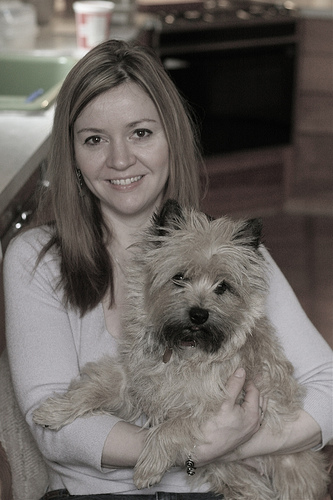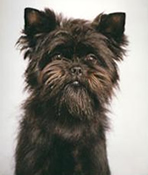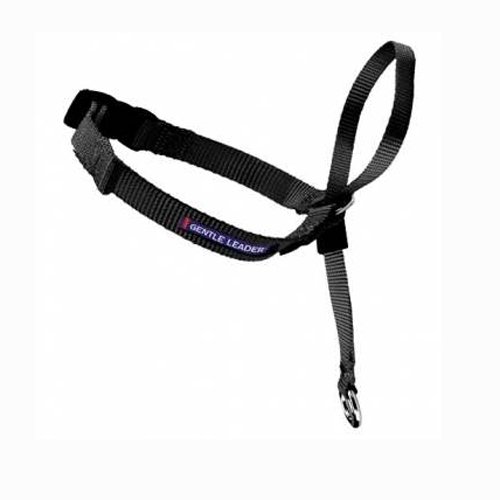
 The Lhasa Apso is a medium-small dog with a sturdy build. It originates in Tibet, where it is said the climate and terrain are so unforgiving that even the smallest inhabitants must be rugged to survive. It is best known for its dense, floor-length coat and high-set, corkscrew tail.
The Lhasa Apso is a medium-small dog with a sturdy build. It originates in Tibet, where it is said the climate and terrain are so unforgiving that even the smallest inhabitants must be rugged to survive. It is best known for its dense, floor-length coat and high-set, corkscrew tail.
The colour of the coat can be varied from light blond to red to black. Many Lhasas have a cream, gold or honey coat, mixed with grey or black. Unlike dogs with a similar appearance, the coat is parted straight down the spine. The animal's eyes are partially covered by a fall of hair that protects them from wind, dust, and glare.
The Lhasa Apso is named for the capital city of Tibet. Nestled in the Himalayas at an elevation of 12,000 feet, Lhasa's name means, “Place of the Gods.” It is one of the most populous cities on the Tibetan Plateau, and one of the highest in the world. Lhasa has a history that stretches back some 1,400 years.
Important both politically and for its religious significance, the city is the site of several historic temples. The main focal point of the city is the Potala Palace, the traditional home of the Dalai Llama. In the city are also the Jokhang, Ramoche and Sera monasteries, among several others of historical importance.
The Apso part of the breed name means “bearded.” Another name for the dog is Abso Seng Kye, which is translated “barking lion sentinel dog” or “bearded lion dog.” The dogs were long seen as a good luck charm and were never bought or sold, but could only be given as a gift. The lion is the animal that protects the Buddha, and it is even said that a llama who fails to reach Nirvana will be reincarnated as one of these intelligent little animals.

Lhasa, the capital city of Tibet, sits in a Himalayan river valley 12,000 feet above sea level. The seat of the Dalai Llama and spiritual center of Tibetan Buddhism, it is known as the “Place of the Gods.”
The dogs of Tibet are ancient breeds with a history thousands of years long, and the Lhasa Apso is no exception. Genealogies record its existence as early as 800 BCE. While the larger Tibetan Mastiff was bred as a guard for the exterior of temples, palaces and houses of the nobility, the smaller Lhasa was an interior sentinel who would sound the alert if an intruder slipped past the watchers outside.
While more of a companion these days, the fierce loyalty to its master remains even today. The breed standard describes this dog as assertive and chary of strangers. For this reason it is important that the animal be well socialized, and from a young age. A firm hand and regular exposure to other dogs and to people will help to prevent behaviour issues later on.
Some Lhasas are raised in homes with small children, but because the dogs bond better with adults and are sometimes confused as to whether a child belongs to the pack, it is generally recommended that Lhasa Apsos be reserved for families that have older children or adults only.

Both Canadian and American Kennel Clubs classify the Lhasa Apso as a non-sporting dog. The Fédération Cynologique Internationale classifies it, with other dogs of Tibetan origin, among the companion and toy dogs. In the UK, the classification is utility.
In the 1920s the animals first arrived in the West, often being shown with Tibetan terriers or Shih Tzus under a single breed named “Lhasa Terrier.” A breed club was founded in Britain in 1933, and in the same year the first Lhasa arrived in America. The first Canadian registration was in 1934.
In the years following these early arrivals, distinct breeds were recognized. There are now four Tibetan dog breeds that are generally grouped together; the Tibetan Mastiff is often classified separately.
 The Lhasa Apso is a dog with a compact, powerful body. The male should stand 10-11 inches at the withers, and should be slightly longer from shoulders to buttocks than it is tall. The best dogs are muscular and well proportioned, weighing about 13-15 pounds. Bitches are slightly smaller than males in all proportions.
The Lhasa Apso is a dog with a compact, powerful body. The male should stand 10-11 inches at the withers, and should be slightly longer from shoulders to buttocks than it is tall. The best dogs are muscular and well proportioned, weighing about 13-15 pounds. Bitches are slightly smaller than males in all proportions.
The head of the Lhasa is square rather than rounded, with a narrow skull that widens at the level of the eyes and then straightens below. The muzzle should not be square, and the teeth should not be visible when the dog's mouth is closed.
The coat should be heavy, straight, and hard. It should neither be woolly nor silky. The tail should be held upright and carried forward, with the tip draped over the body to one side. Eyes are brown and the nose is black. Ears are pendant and well feathered; the fur should hang down to the level of the jaw in an adult dog.
The Lhasa should have an easy, free-flowing trot that is unimpeded by the length of its coat. The pads of the paws should be visible when the dog moves. This is seen as an indication of balance between the strength of it hind legs and the reach of its forepaws.
The Lhasa Apso is sometimes described as a diva. It is a dog with a regal attitude that is evident even when it comes to toileting. This breed will typically not ask to be let out when it needs to go, but rather expects to be asked. Similarly, if the owner fails to establish himself as the alpha, the dog will gladly step into this role.
The Lhasa is an intelligent dog who will be easily bored when it comes to rote obedience training. It is also playful to the point of being a clown, and will get into mischief when it sees the chance.
Training this dog requires patience and understanding of the breed, and above all consistency. The independent and quick-witted animal will seize any opportunity to get its own way. It can be manipulative, and will retaliate if it feels a disciplinary measure is unfair. The owner who is not prepared for the challenges of training this dog can be faced with an animal whose behaviour is inappropriate and whose temperament is challenging.
That being said, with the right guidance the little Apso can learn obedience. It will love its family unconditionally and will guard both its pack and its home without fear.
This is a slow-maturing and long-lived breed, a factor that should be weighed seriously when considering whether to bring a Lhasa home. It typically takes three to four years for the dog to mature, during which time it will require frequent socialization and consistent training. The owner must establish his place as alpha dog early on, otherwise the puppy will usurp this position and discipline will suffer.
An independent nature means it is a good choice for a single adult or a couple who both work away from home. On the other hand, it is not the best pet for a family with small children or for someone who travels for extended periods of time and can't invest the time in training the pup when it is small.
The dog's keen sense of hearing and compact size make it an excellent choice for a hearing dog. Lhasa Apsos are also used as therapy dogs because of their playful spirit and sensitive nature. Many owners say their Lhasa has many human qualities, including a very expressive face. The dog requires less space than a larger breed and will adapt itself to its owner's level of physical activity, making it the ideal pet for an apartment or small home in the city. It does equally well, though, in a large suburban home or out on a farm or country estate.
 A Lhasa Apso pup learns some of its positive behaviours, such as bite restraint, from its mother. For this reason it is best to leave the litter with the mother until they have teeth. The best time to bring the puppy home is around ten weeks.
A Lhasa Apso pup learns some of its positive behaviours, such as bite restraint, from its mother. For this reason it is best to leave the litter with the mother until they have teeth. The best time to bring the puppy home is around ten weeks.
Housetraining is facilitated by leaving the pup in his crate when not supervised and taking him directly to a designated spot when he goes outdoors. He should be praised freely for sniffing at the spot, even if he doesn't eliminate. Whenever he is removed from the crate, he should be taken to this same spot. Initially, he should only be allowed to play indoors for 20 minutes before he is taken outside to do his business.
As the puppy gains muscle control, he can be allowed longer play sessions before going outside. Remember that this is not a dog that will go to the door and as to be let outside. It is up to the owner to let him out on a fixed schedule, in order to avoid accidents.
When it comes to obedience training, sessions should be kept short and the dog should be well rewarded for obeying a command. Lhasa Apsos respond well to rewarding with treats; don't be afraid to use them. Whenever unsupervised the dog should be returned to his crate; if left out unsupervised he will dream up all sorts of ways to get into mischief.
Leaving toys in the pen with the dog will reduce barking and whining from boredom, as will taking him out for 20-30 minutes of exercise each day. The Lhasa Apso has very keen hearing. He needs to learn from his master which noises are normal for the environment, and which ones he should attend to. If he successfully learns which sounds to attend to, he will rarely bark except to alert you to something out of the ordinary. A well trained Apso will not bark, even when he hears other dogs barking.
With its long, dense coat the Lhasa Apso requires consistent grooming. Even though a puppy's coat doesn't need much care, start brushing it about three times a week so the animal gets used to the process. The coat should always be sprayed before brushing – never dry brush a Lhasa!
If the dog will visit the groomer, it is best to start young so it will become used to the noise and the setting. Some owners find it easier to keep the dog's coat short. This “puppy cut” is less likely to tangle than when the coat is kept to its full length.
The Lhasa is a rugged breed that thrives in almost any environment. It does well within the confines of an apartment, or running around in the countryside. There are few specific health concerns, however the American Kennel Club advises new owners to choose a reputable breeder and ask for a written health guarantee. Some Lhasas will suffer from a potentially fatal condition called renal dysplasia. While breeders will be on the lookout for this condition, sometimes signs will only crop up once the puppy has gone to its new home.
Many Lhasas will suffer a condition called Keratoconjunctivitis sicca, otherwise known as KCS or "dry eye." This condition means the dog's eyes won't produce enough tears. Common symptoms include the dog rubbing at its eyes, squinting, or avoiding exposure to bright light. There can also be a thick mucus around the eyes, and the dog's eye may be puffy or red. If you notice any of these signs report them to your vet, who can treat the condition with artificial tears or tear stimulants. Do not ignore this condition, as it may result in blindness if left untreated.
 Tips On How To House Train A Puppy
Credit: Humane Society Of Greater Rochester v
Tips On How To House Train A Puppy
Credit: Humane Society Of Greater Rochester v
 Interview With A Professional Dog Groomer
Interview With A Professional Dog Groomer
The Dog Gu
Interview With A Professional Dog Groomer
Interview With A Professional Dog Groomer
The Dog Gu
 The Evolution of Dogs: 5 critical steps in the evolution of the modern dog
5 Critical Steps in the Evolution of Dogs
The history of o
The Evolution of Dogs: 5 critical steps in the evolution of the modern dog
5 Critical Steps in the Evolution of Dogs
The history of o
 Learn How to Tell if Your Dog or Cat is Obese and in Poor Health
Is your Dog Healthy?Dog and
Learn How to Tell if Your Dog or Cat is Obese and in Poor Health
Is your Dog Healthy?Dog and
 Hate to Walk Your Pulling Dog? Heres the Instantaneous Solution (Really!)
Credit: thatmutt.c
Hate to Walk Your Pulling Dog? Heres the Instantaneous Solution (Really!)
Credit: thatmutt.c
Copyright © 2005-2016 Pet Information All Rights Reserved
Contact us: www162date@outlook.com